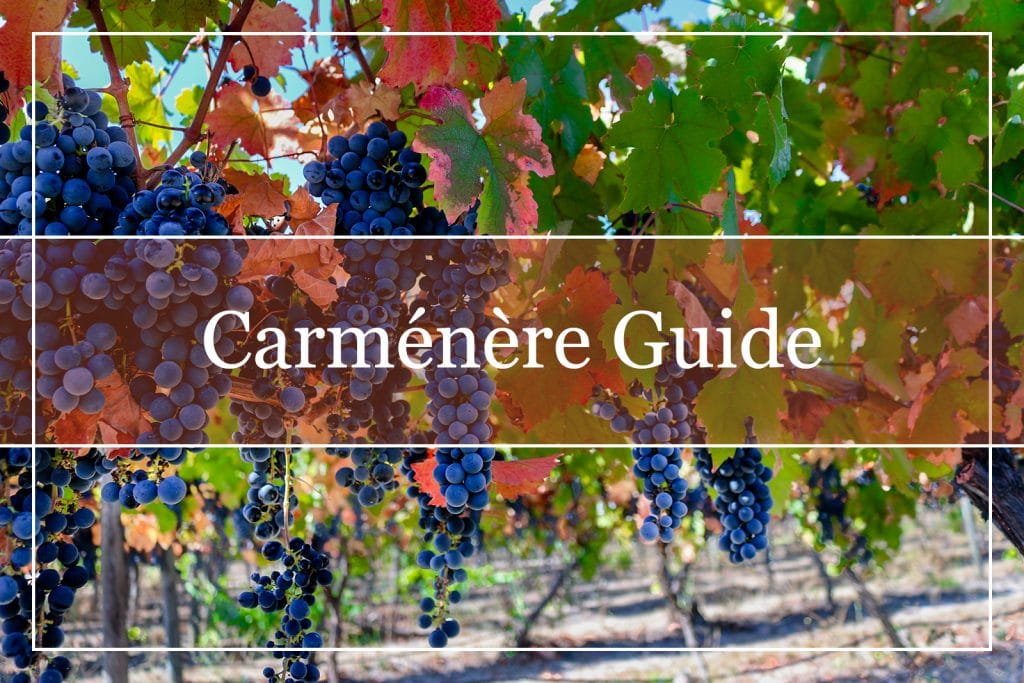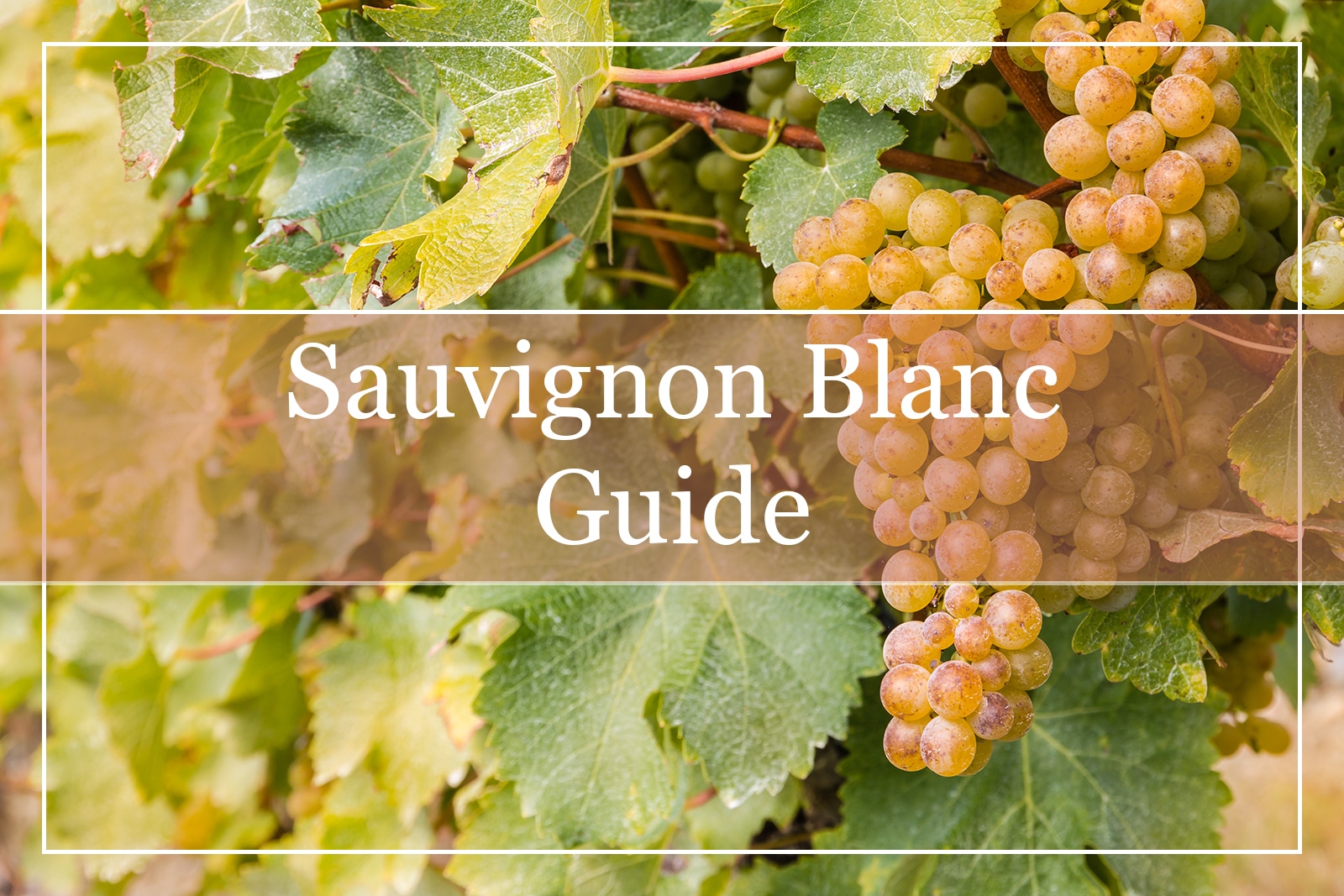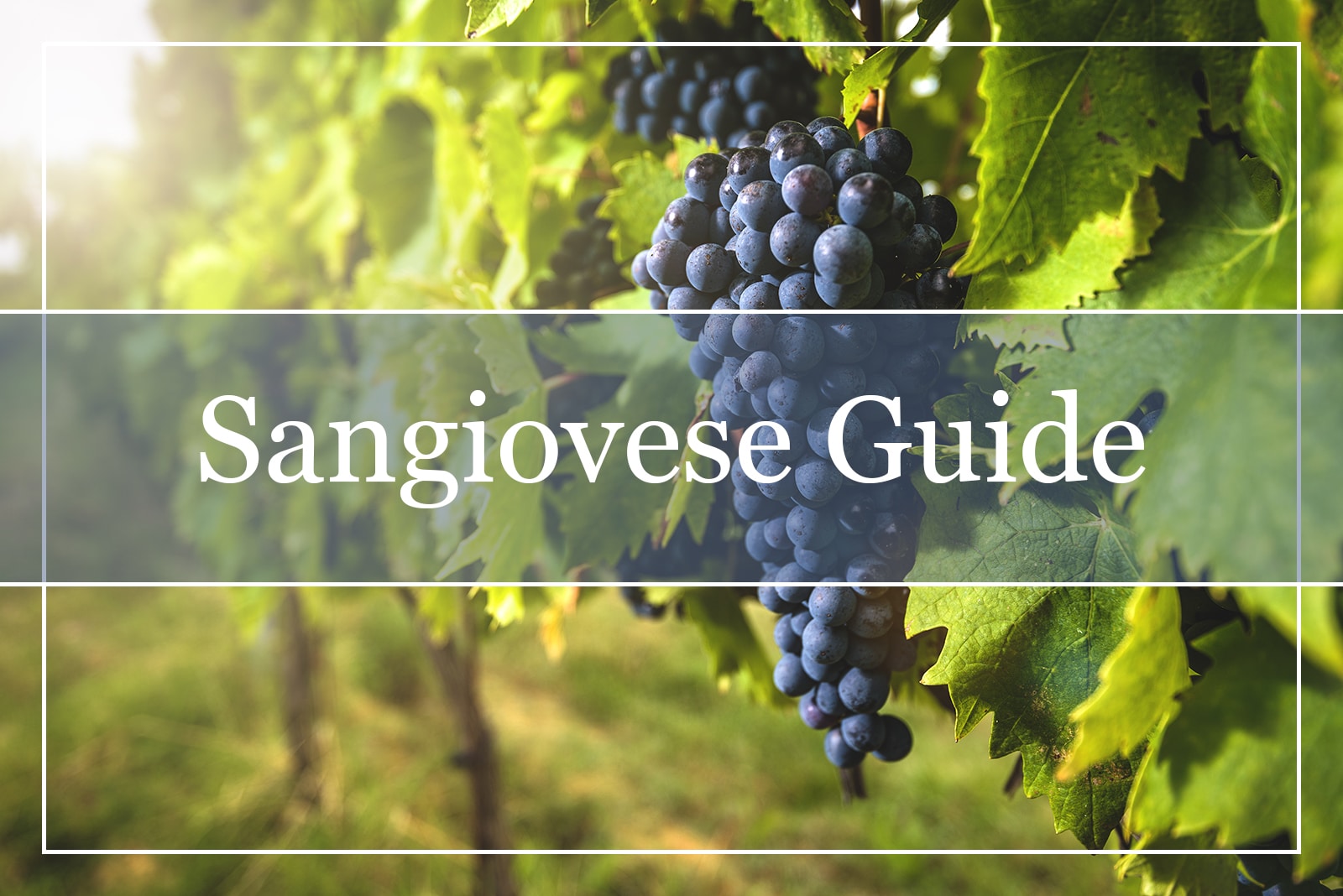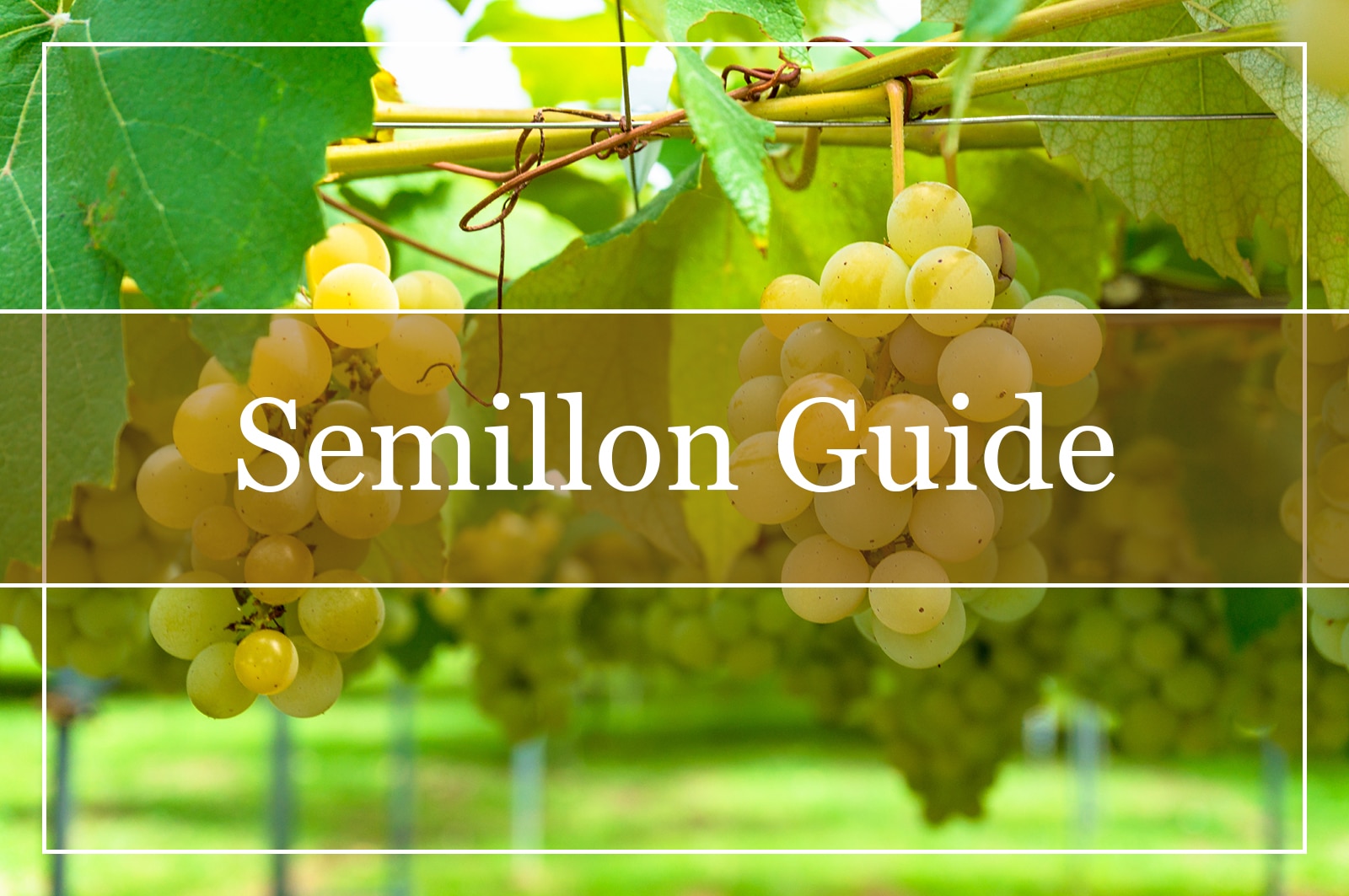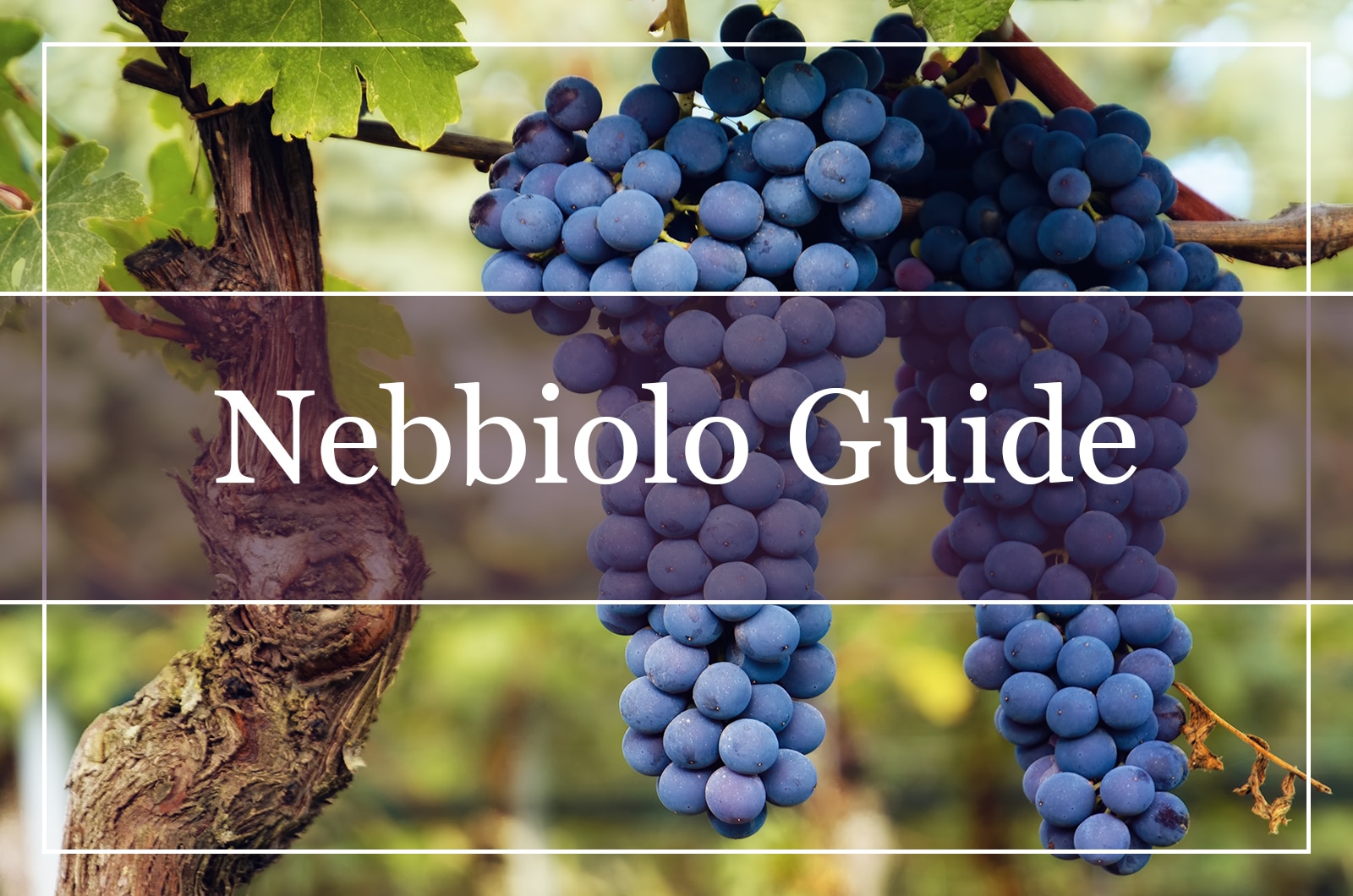What Is Carménère?
Carménère is a red wine grape that is believed to have come from the Médoc wine-growing region of Bordeaux in France. This grape varietal is thought to be one of the six original red grapes from this part of France. Ironically, it is now very difficult to find any wineries producing wines from this grape.
The Carménère characteristics are that it is a late-ripening grape, and when grown in a favorable climate, it will produce powerful, deep red wines with herby notes that are not unlike Merlot and Cabernet Sauvignon.
A Genetic Link to Cabernet Franc Is Discovered
Interestingly, there are many similarities between these grapes, and DNA investigations have discovered that these three grapes come from the same parent grape – Cabernet Franc. Up until the 1860s, Carménère was one of the most important grapes in the Médoc and it was one of the most commonly planted grapes in the region.
Chile Saves The Carménère Grape
Unfortunately for the Carménère grapes, the vines are highly susceptible to phylloxera, which devastated the vineyards at that time, and cultivation of this grape was brought to a halt.
By a strange twist of fate, just before the phylloxera outbreak in France, Chilean vignerons had taken mistakenly taken cuttings of this grape, thinking that they were Merlot cuttings. The vines are very similar due to their common parentage, and it was an easy mistake to make. It was only when DNA testing was done decades later that Chile realized that they had scored a winner!
Carménère is now the jewel in Chile’s wine-growing crown and Chile is considered the savior of the Carménère grape.
As a result, many other wine-growing countries became interested in this varietal, and it has now found homes in various countries around the globe. You may be surprised to find out that these grapes are grown in a wide range of regions from New Zealand to China.
What Color Is Carménère?
Although the name of this red wine refers to the changing color of the leaves on the vineyard in autumn, it also aptly describes the Carménère color. The wine is an intense red with the flavors of ripe berries, plums, and spice. It is wonderful when blended with other red wines such as Cabernet Sauvignon and Merlot.
What Does Carménère Mean?
The Carménère color was named after the French word for crimson which is “carmin”. In the autumn, the color of the leaves changes to a spectacular crimson color before they fall. The Carménère make a dramatic contribution to the autumnal display.
How to Pronounce Carménère?
Carménère pronunciation is very important in wine society, and being a rare wine, many will wonder how to pronounce the name correctly Carménère pronunciation. Follow the following guidelines and take care on where to put the emphasis:
Car·me·nère | \ kär-mə-ˈner \
In Chile and some other countries, the first accent is not sounded. However, in some countries, both are emphasized.
There are many audios and videos online that will assist you with the correct pronunciation. The plural of Car·me·nère is Carmenères.
Where Does Carménère Come From?
Although Carménère originated in the Bordeaux region of France, it is now a rare find in the country of its birth. It was used mainly as a blending grape in the 1870s. The vast majority of Carménère wines produced today, come from Chile – its adopted homeland, and the wine industry of that country is going from strength to strength. This wine is also produced in Italy and China.
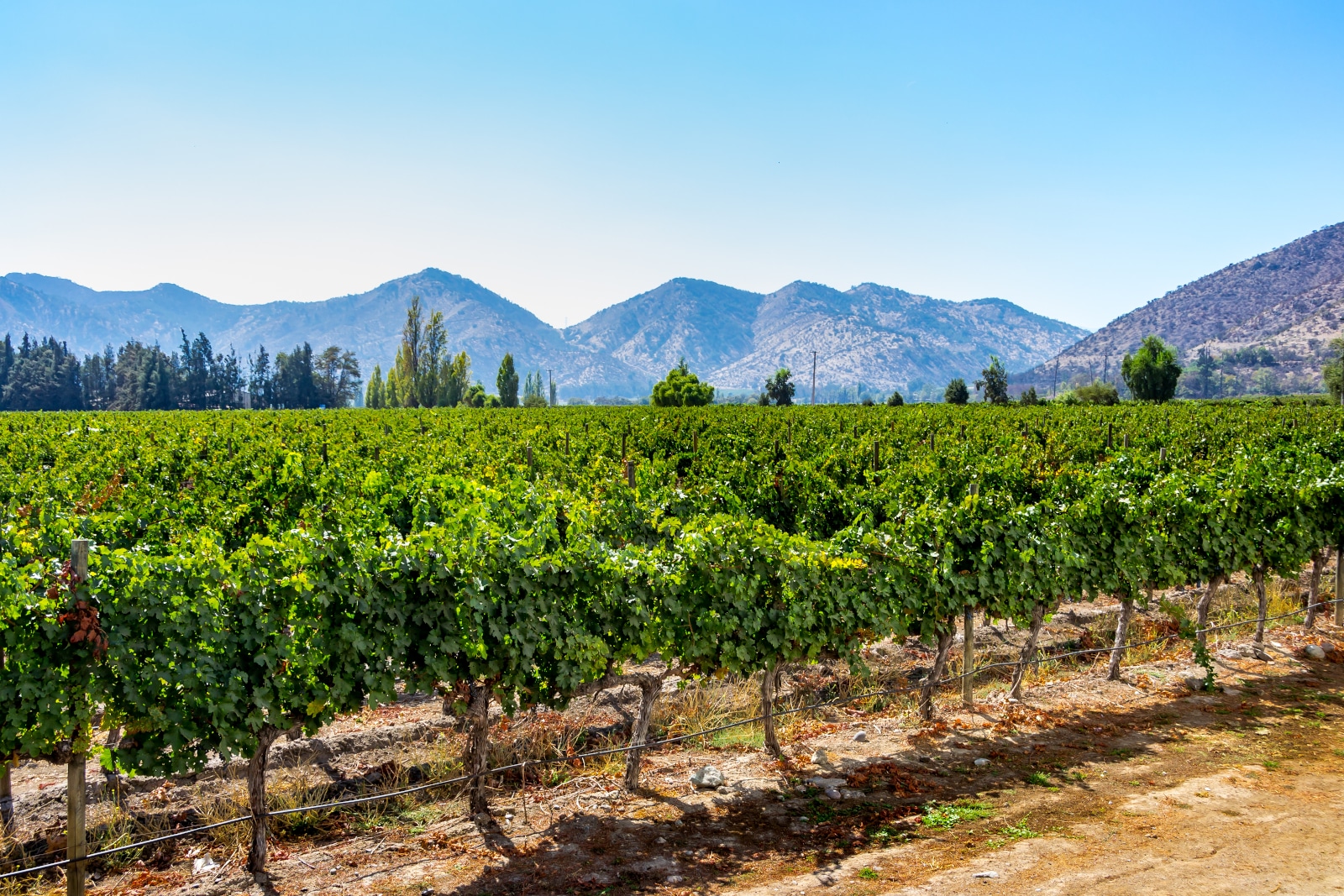
The Central Valley of Chile is the major wine-growing region. Within the Central Valley, there are specific areas that have become famous for the high-quality Carménère grapes that are grown there:
The Maipo Valley:
This region in the northern part of the Central Valley. The Carménère wine from this area is known for its light floral hints of cherry, hibiscus, and rose, which is followed by notes of granite minerality.
The Cachapoal Valley
The Carménère wines from this area are quite different in character to those from the Maipo Valley. They have a mixture of sweet and sour notes, accompanied by the herbal flavors of green peppercorn. These wines have a higher acidity level and this makes them ideal for aging.
Peumo
It is from this region that the top quality Chilean Carménère wines originate. Peumo is considered to be one of the oldest and most established wine regions of Chile and the wines have benefitted from the years of experienced winemaking. The Carménère wines from Peumo are considerably more full-bodied with increased alcohol content and a sweeter taste profile. These factors contribute to the significant aging potential of these wines of up to fifteen years.
Colchagua Valley
You can distinguish the hearty fruit flavor of raspberries in wines from this valley. If they come from vineyards in Apalta, the wines will have firm tannins, and are fermented in oak, and have little of the herbal notes of wines from other areas. Apalta is a protected forest area, so there are only six wineries there, making the wines very exclusive.
Rapel Valley
These wineries produce wine that may have been collected from the Colchagua and Cachapoal valleys. They are richer in flavor, have lower acidity, and a deeper color than the wines from other Andes regions.
What Kind of Wine Is Carménère?
Carménère is a smooth red wine with a rounded palate that is quite similar to Merlot. However, it is not as full-bodied as Cabernet Sauvignon. The grapes are harvested at the end of the summer so that they have had the maximum amount of sunshine to ripen the grapes. Once the grapes have turned deep, blue-black in appearance. It is at that time that the leaves on the vines become the vivid shades of crimson and orange that give the grapes the name Carménère.
The Winemaking Process
Following the late harvest, the grapes are firstly de-stemmed before being tanked at a controlled temperature. Fermentation takes place with the skins on. They are then lightly pressed and fermentation yeasts are added to the must in stainless steel tanks. Finally, the wine is decanted and left to sharpen for about four months before being bottled.
Is Carménère Dry or Sweet?
Carménère is a medium to full-bodied red wine and is considered to be medium dry. This deep purple wine, with flavors including tobacco, dark fruit, bell pepper, and chocolate, is well-rounded and smooth.
What Does Carménère Taste Like?
Carménère Tasting Notes
This beautiful ruby red wine has the intense scents of leather, berries, and herbal green peppers, and chocolate meaning that the striking Carménère aroma is not easily forgotten.
Carménère Flavor Profile
The Carménère taste is full-bodied and sun-kissed. You will detect the down-to-earth flavors of plum, tart raspberry, peppercorn, green pepper, vanilla, and spice. The palate medium in acidity and tannins.
There is sometimes a bitter finish to this red wine but that is caused by being harvested too early. In cheaper versions of this wine, it is blended with Merlot or Cabernet Sauvignon to soften the bitterness.
Pyrazines Add Flavor
In top-quality Carménère wines, a more subtle bitterness is nothing more than a hint of bittersweet cocoa powder and adds to the blissfully long finish of this wine. It is the high levels of the aroma compounds called pyrazines that cause the classic herbal notes of pepper and paprika. When the grapes are harvested at prime ripeness, the wine will have a sweet/sour cherry flavor with layers of smoky, earthy flavors and it will be deep crimson in appearance.
How to Serve Carménère?
Serving the delightful Carménère wine should be a rewarding experience. Because of its beautiful purple color, it is worth taking the time to admire its brilliance and opacity in the glass. Use a classic stemmed red wine glass with a large bowl.
The Correct Serving Temperature Is Vital
The ideal temperature to serve Carménère wine is around 18°C (64°F). Take your time and swirl the wine around in the glass for a few seconds before taking a deep sniff. This will give you a good impression of the aromas. Following that, you will be ready to take a small sip and allow the wine to roll over the tongue. Your palate will be ready to engage with the tannins and acidity before taking in the fruity, herbal, and spicy notes that move through to a long finish.
How Long Should Carménère Breathe?
As with most medium to full-bodied wines, Carménère wine benefits from some breathing time. You should decant the wine and allow it to breathe for at least thirty minutes before serving. In the unlikely event that you do not consume all the wine in one go, make sure to re-seal the wine in the bottle and it should be fine to drink with the next three days.
What Food to Pair With Carménère?
Carménère food pairing is made easier by the light tannins and high acidity of the wine. It is a red wine that will pair perfectly with a large number of cuisines and dishes. For example, the lower tannins match well with light, low-fat options. On the other hand, the acidity levels are delicious with sharp acidic sauces that are found in Cuban or Chinese cuisines. The herbal notes bring an additional pairing option because they go perfectly with salsas, pesto, or minty flavors. Bearing that in mind, you will see that Carménère wine will be great with salads, vegetarian dishes, and classic Italian flavors.
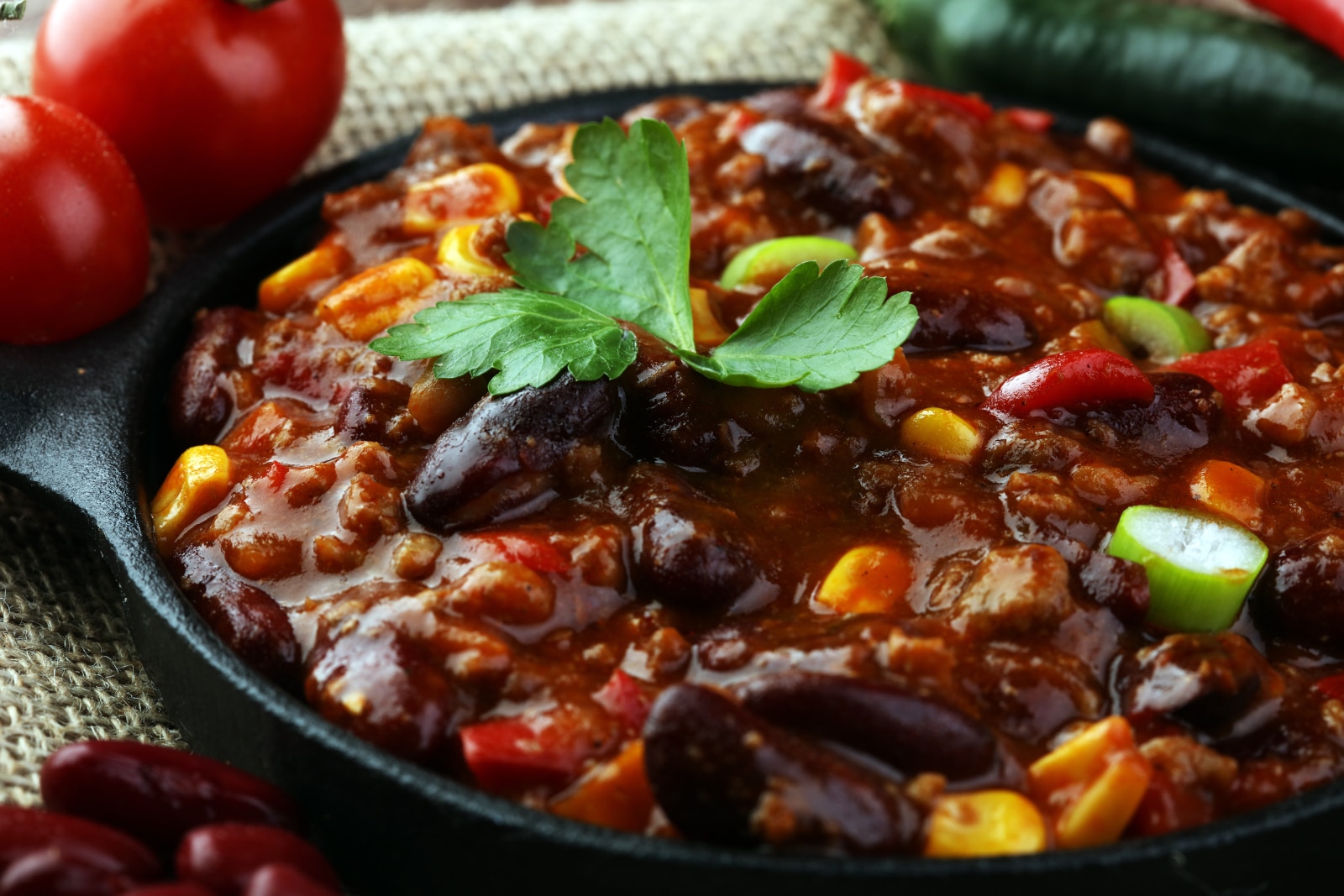
Carménère Wine and Meat Are a Match Made in Heaven!
It will also taste divine with grilled or barbecued meat such as turkey and chicken, duck, and even goes well with lamb and beef. In fact, it is hard to think of any food that will not taste even better when accompanied by a glass of this delicious, fruity red wine.
Meat Pairing Ideas:
Chicken Mole, Cuban Roast Pork Belly, Any hearty meat stew, Roast Lamb with mint sauce, Fillet steak with a peppercorn sauce, Chilli con Carne.
Carménère Cheese Pairing
Red wine and cheese is a match made in heaven, and pairing Carménère wine with a range of cheeses is no exception. Try pairing it with goat’s cheese, Mozzarella, Cotija Cheese, or anything from soft cheeses to a humble Cheddar platter.
Vegetable Pairing:
Call them what you like – bar snacks, tapas or apperitivos, Carménère wine goes with them all! Olives, capers, stuffed peppers, or tomato-topped bruschetta are all perfect. The flavors of vegetable dishes are enhanced by this wine too. Potatoes cooked any which way, garlic-infused dishes, pulses, and baked/roasted vegetables are all included. Flavor these dishes with a range of herbs and spices such as Green Peppercorn, Black Pepper, Red Chili Flake, Chipotle, Cumin, Coriander, Thyme, Oregano, Chives, Lemon and you will be on to a winner. The reason that so many of these flavorings work with the wine is that it has deep herbal notes that will sing out when partnered with these foods.
How Much Alcohol Does Carménère Have?
The Carménère alcohol content is usually in the range of 13–15%. This is typical of the top-quality range of this wine. The alcohol nestles in the deep, ripe flavors of ripe plums, berries, and dark chocolate and is enhanced by soft gentle tannins.
How Many Calories Are There in Carménère?
There are up to 118 calories in a 5 ounce serving of this red wine. The carbs in Carménère of the same size serving amount to 2g. These levels are fairly typical of most red wines and should always be considered at the time of drinking. Remember that all alcohol has calories, but red wines also tend to have some good health benefits.
Conclusion
This unusual full-bodied red varietal wine has put Chilean wineries on the map. As it grows in popularity, Carmenère wine is set to bring prosperity and fame with its unique profile. It has rewarded its adoptive country well for rescuing it from extinction in France. It has indeed come a long way from being mistaken as a late-ripening Merlot and now stands proudly on its merit.
A Special Wine to Celebrate Every Day!
It even has its own celebration day, so make sure you remember to open a bottle on Carménère Day when it is celebrated on November 24th! You will find the deep fruit flavors and herby minerality of this red wine really something to celebrate – and probably every day will become Carménère Day in your home. Once tasted, never forgotten.

